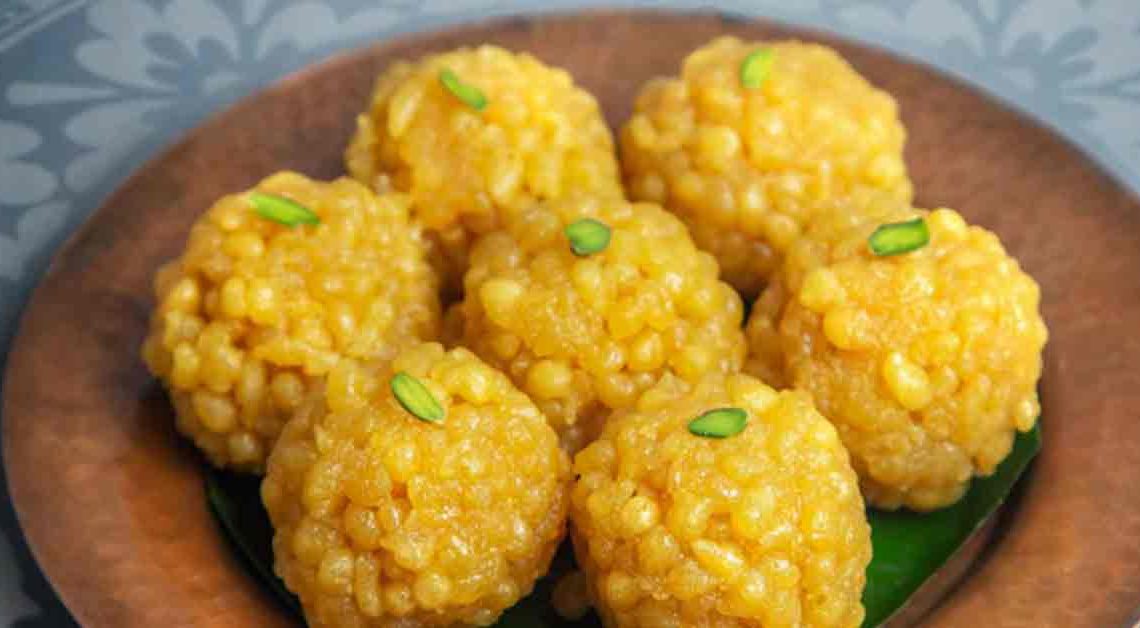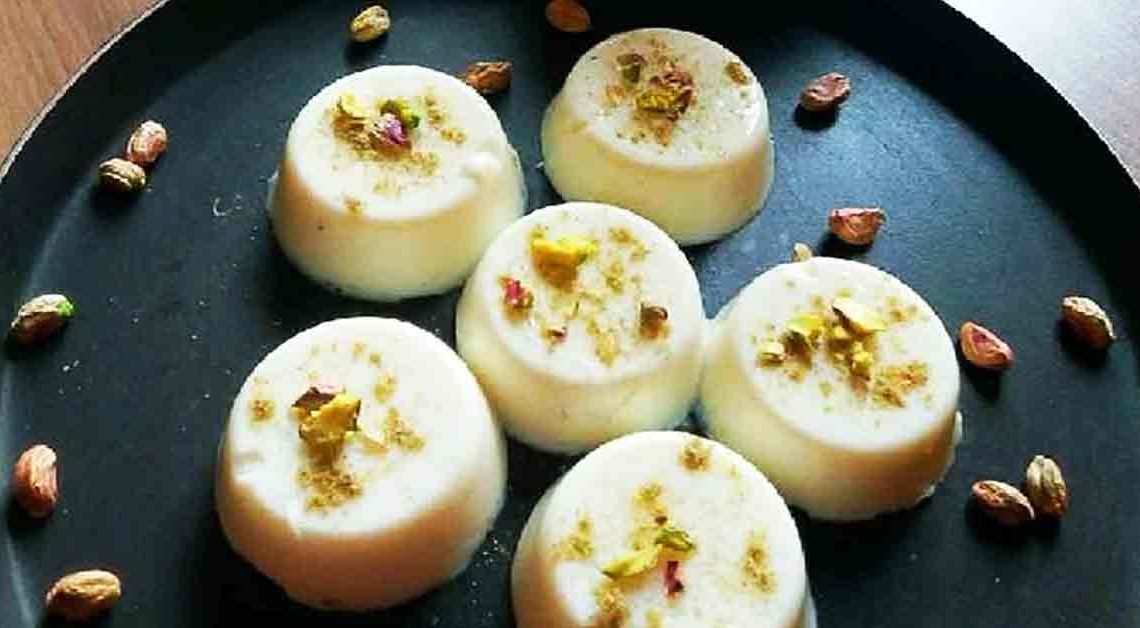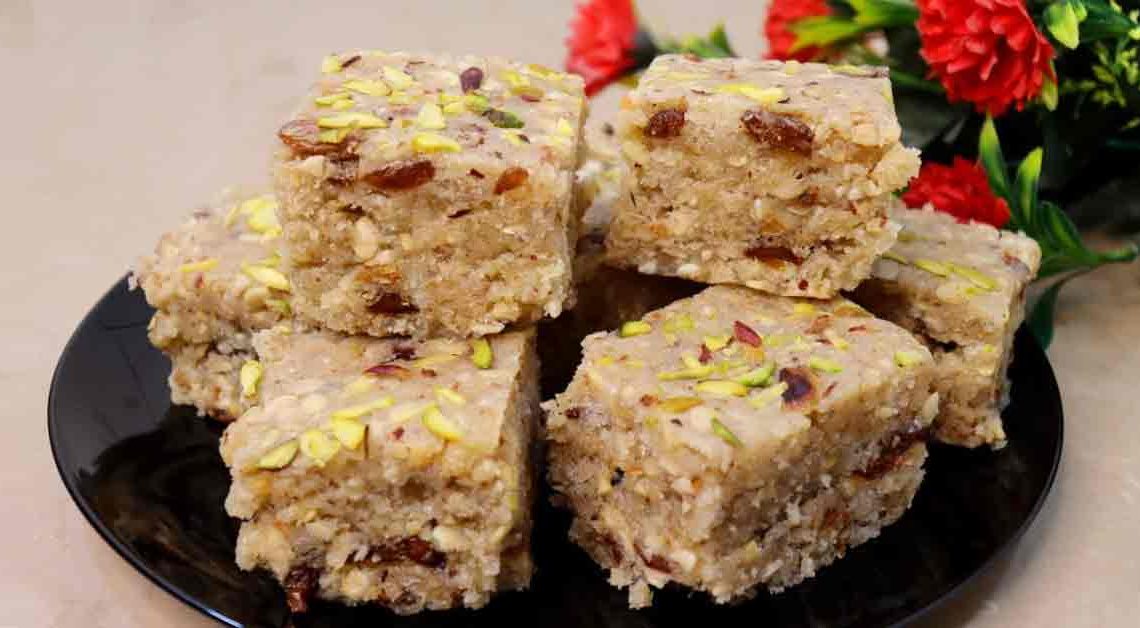Sweet Tales from Rajasthan: Chogani Ladoo Charm

Welcome to a culinary journey on Mithainama that transcends time and culture—where every bite tells a story and flavors whisper tales of tradition. Today, let’s embark on a delectable exploration into the realm of Chogani Ladoo, a cherished gem among Indian sweets that encapsulates generations of heritage and taste.
Picture this: a round, golden ball of indulgence, adorned with aromatic saffron strands, nestled in a bed of finely chopped nuts, and exuding the richness of ghee and cardamom. It originates from the heartlands of Rajasthan, is more than a mere sweet; it’s an ode to celebrations, rituals, and family bonds.
The beauty lies not just in its ingredients but in the love and craftsmanship that goes into its making. From carefully roasting gram flour to coaxing out the perfect hue, to patiently shaping each ladoo by hand—every step embodies a culinary heritage passed down through generations.
Get ready to tantalize your taste buds and immerse yourself in the essence of Chogani Ladoo—a symphony of flavors that connects the past with the present and invites you to experience the soul of Indian sweets like never before. Join me as we uncover the secrets and stories behind this irresistible delicacy!
Origin of Chogani Ladoo
Chogani Ladoo, a traditional Indian sweet, has its origins rooted in the culturally rich state of Rajasthan. This delectable treat holds a significant place in the culinary heritage of the region.
The name “Chogani” is derived from the word “Chogan,” which refers to the art of preparing or mixing. Ladoos, in general, are round-shaped sweets made from various ingredients, and stand out due to its distinctive preparation method and ingredients.
This sweet delicacy is primarily crafted from gram flour (besan), ghee (clarified butter), sugar, cardamom, and nuts. The key to its unique flavor lies in the careful roasting of gram flour in ghee until it reaches a rich golden color, infusing the mixture with a nutty aroma.
The art of making involves a meticulous process. Once the gram flour is perfectly roasted, it’s combined with powdered sugar and flavored with cardamom, enhancing its taste and fragrance. The mixture is then handcrafted into small, round ladoos, often garnished with chopped nuts like almonds or pistachios, and sometimes adorned with saffron strands, adding a touch of luxury and visual appeal.
History of Chogani Ladoo
The history intertwines with the cultural tapestry of Rajasthan, India, dating back centuries, although specific documented records might be limited. This iconic sweet is deeply rooted in tradition and has been an integral part of Rajasthani cuisine for generations.
Rajasthan, known for its vibrant culture, royal heritage, and culinary richness, birthed Chogani Ladoo as a revered sweet treat. Its creation was influenced by the availability of local ingredients and the culinary expertise of the region’s inhabitants.
The name “Chogani” derives from “Chogan,” denoting the process of mixing or preparing. This indicates the meticulous method involved in making this delicacy. Gram flour (besan), a staple ingredient in Indian cuisine, forms the core of Chogani Ladoo. Combined with ghee (clarified butter), sugar, cardamom, and nuts, this sweet encapsulates the essence of Rajasthan’s flavors.
The precise historical origin might be shrouded in the annals of time, but its enduring presence in Rajasthan speaks volumes about its significance. Its preparation method and flavors reflect the region’s culinary heritage, showcasing the artistry and expertise passed down through familial and cultural ties.
Cultural Significance
Chogani Ladoo holds profound cultural significance in the fabric of Rajasthan’s heritage, symbolizing more than just a sweet treat. Its importance transcends mere culinary delight, touching upon various aspects of tradition, celebrations, and familial bonds within the region’s cultural landscape.
Festivities and Rituals: It is intrinsically linked to celebrations, festivals, and auspicious occasions in Rajasthan. It graces events like weddings, births, and religious ceremonies, symbolizing prosperity, joy, and the sharing of happiness among families and communities.
Traditional Culinary Heritage: The preparation and sharing are deeply rooted in the state’s culinary heritage. The intricate process of roasting gram flour in ghee, the addition of aromatic spices like cardamom, and the garnishing with nuts exemplify the meticulous craftsmanship and culinary expertise passed down through generations.
Symbol of Togetherness: Making it often involves a collective effort within families. The process of crafting these ladoos becomes a communal activity, fostering togetherness, and strengthening familial ties as older generations pass down their knowledge and techniques to younger members.
Where is Chogani Ladoo Famous?
Chogani Ladoo is primarily famous and deeply rooted in the culinary traditions of the Indian state of Rajasthan. Rajasthan, known for its vibrant culture, royal heritage, and diverse cuisine, particularly cherished as a beloved sweet delicacy.
Within Rajasthan, it holds significance across various cities, towns, and villages, forming an integral part of celebrations, festivals, and special occasions. It is prepared and enjoyed by families across the state, passed down through generations, and is available in local sweet shops and markets.
While its popularity predominantly resides in Rajasthan, the deliciousness and cultural richness of Chogani Ladoo have transcended regional boundaries to some extent. Due to migration and the spread of Indian cuisine, particularly in areas with a significant Rajasthani diaspora, and can sometimes be found in sweet shops or made in households outside of Rajasthan, especially in regions with a penchant for Indian sweets.
Interesting Facts and Trivia
Certainly! Here are some interesting facts and trivia related to Chogani Ladoo:
- The key ingredients include gram flour (besan), ghee (clarified butter), sugar, cardamom, and nuts like almonds or pistachios. The proportions and quality of these ingredients play a crucial role in achieving the ladoo’s perfect taste and texture.
- Crafting it is a meticulous process. The mixture of roasted gram flour, ghee, and sugar is shaped into round ladoos by hand, showcasing the artisanal skill and patience required in its making.
- It is often prepared during festivals and special occasions like Diwali, weddings, or religious celebrations in Rajasthan, symbolizing prosperity and happiness.
- The addition of cardamom to the ladoo mixture lends a distinct fragrance and flavor, enhancing its overall appeal.
- While traditionally enjoyed as a standalone sweet, Chogani Ladoo has also found its way into modern cuisine, inspiring chefs to incorporate its flavors into various desserts and dishes.
Did You Know?
Consuming Chogani Ladoo, a traditional Indian sweet, not only tantalizes the taste buds but also offers various health benefits:
- Gram flour (besan), a primary ingredient, is a good source of plant-based protein. This makes these ladoos a healthier sweet option, especially for individuals seeking protein in their diet.
- The combination of ghee and sugar provides a quick energy boost. It’s often consumed during festivals or as a snack to replenish energy levels.
- Nuts like almonds or pistachios used as garnishes are packed with essential nutrients, including healthy fats, vitamins, and minerals, adding nutritional value to the sweet.
- Cardamom, a common spice used in the preparation of it, is known for its digestive properties. It aids in digestion and can help alleviate digestive issues.
- While these ladoos offer nutritional benefits, it’s essential to consume them in moderation due to their sugar and calorie content. Enjoying them as part of a balanced diet ensures the benefits without excessive intake of sugar and calories.







